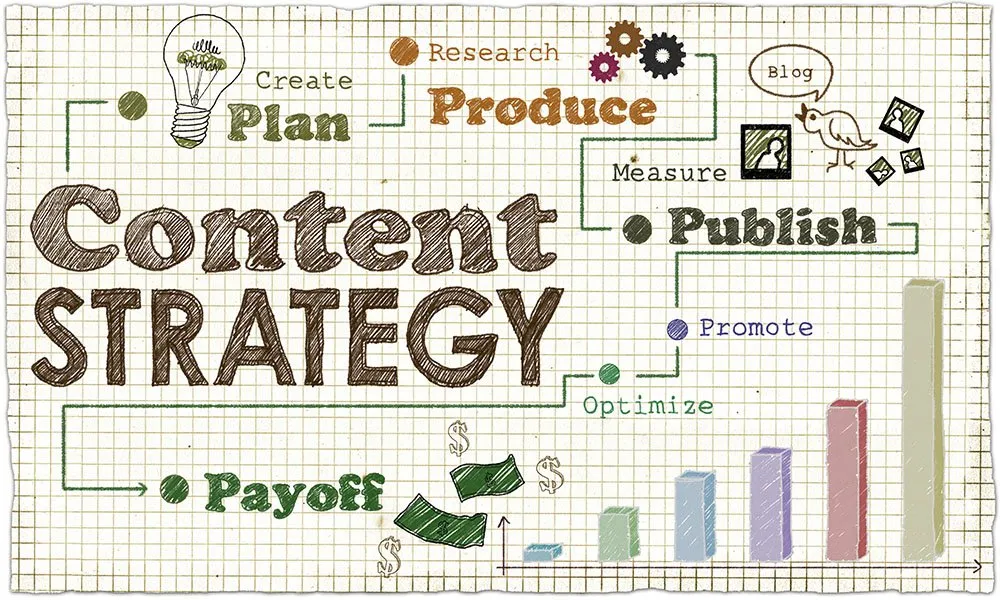The Evolution of Ethical Fashion
The shift toward conscious consumerism and the increasing demand for sustainable and ethical products are reshaping the fashion industry. Ethical fashion is no longer a niche market; it is becoming mainstream. This change is driven by consumers who want transparency, sustainability, and fairness in the products they buy. As more people become aware of environmental issues and labor rights, brands that embrace ethical values must strategically market themselves to stand out.
The Shift Toward Conscious Consumerism
- Consumers today care about where their clothes come from and the impact of their production.
- Ethical fashion brands need to create awareness by telling compelling stories.
- Sustainability and social responsibility are increasingly becoming the core values that drive purchasing decisions.
Importance of Marketing in Ethical Fashion
- The challenge for ethical fashion brands is to make their values visible and appealing.
- The role of storytelling in marketing is essential to convey the brand’s authenticity and commitment.
- Ethical fashion brands must use marketing to differentiate themselves in a competitive market.
Building a Strong Ethical Fashion Brand Identity
Your brand’s identity forms the foundation for all your marketing efforts. An ethical fashion brand must clearly communicate its mission, values, and ethical commitment through every touchpoint.
Defining Your Brand Values
- Clearly define what sustainability, fair trade, and ethical production mean for your brand.
- Articulate your commitment to reducing environmental impacts, such as carbon emissions or water consumption.
- Align your values with your customers’ expectations, ensuring they resonate with your target audience.
Visual and Verbal Identity
- Your logo, color palette, and design choices should reflect the values of your brand—natural, minimalistic, and sustainable.
- The tone of your messaging needs to evoke transparency, trust, and responsibility. Consider using a warm and welcoming approach to communicate your values.
Certifications and Standards
- Ethical fashion brands should proudly display certifications like Fair Trade, GOTS (Global Organic Textile Standard), and others to provide proof of their commitment.
- These certifications help build trust and credibility, showing your dedication to ethical practices and sustainable production.
Understanding and Connecting with Your Target Audience
Understanding your target market is key to tailoring your marketing strategies effectively. Ethical fashion appeals to an audience that is diverse but shares a common desire for responsible consumption.
Demographics of Ethical Consumers

- Consumers interested in ethical fashion often prioritize sustainability and quality over fast fashion trends.
- Common demographic traits include millennials, Gen Z, and conscious consumers across different income levels and geographic regions.
- These consumers value craftsmanship, fair labor, and environmental responsibility.
Psychographics of Ethical Shoppers
- Ethical shoppers are motivated by strong beliefs in environmental protection, fair wages, and social responsibility.
- Many consumers are willing to pay a premium for products that align with their personal values.
- They prefer brands that actively engage in social causes and reflect a sustainable lifestyle.
Leveraging Customer Feedback
- Actively seek customer feedback through surveys, reviews, and direct communication.
- Use testimonials and customer stories to engage other potential buyers by showing how they can make a difference through their purchases.
Storytelling: Weaving Authentic Narratives
Storytelling is one of the most powerful tools ethical fashion brands have. A compelling story allows brands to connect emotionally with their audience and humanize their mission.
Crafting a Transparent Story
- Share the journey of your products, from raw materials to finished garments.
- Explain the ethical sourcing process and the positive impact your brand has on the environment and workers.
- Consumers appreciate transparency, and sharing these stories fosters trust and loyalty.
Showcasing Artisan and Worker Stories
- Highlight the artisans and workers behind the products, showcasing their craftsmanship and the fair wages they earn.
- Show how the people in your supply chain benefit from ethical practices and empower them by telling their stories.
Highlighting Sustainability Efforts
- Educate your audience about the sustainable practices your brand uses—whether it’s zero-waste production or utilizing organic materials.
- Share data and impact metrics, such as the number of trees saved or how much water your brand conserves, to make your efforts tangible.
Digital Marketing Strategies for Ethical Fashion
In today’s digital age, online marketing is essential. Ethical fashion brands must leverage various digital channels to promote their products and values.
Social Media Campaigns
- Use social media platforms like Instagram, Pinterest, and TikTok to share visually captivating content that tells your brand’s story.
- Collaborate with influencers who share your values to reach a wider audience and build credibility.
Content Marketing and Blogs
- Create educational content that talks about sustainability, fair trade practices, and ethical fashion trends.
- Use your blog to showcase behind-the-scenes content, interviews with artisans, or in-depth articles about sustainable production practices.
Email Marketing
- Design email campaigns that connect on a personal level, offering your customers insights into the brand’s journey and offering exclusive access to new collections.
- Engage your subscribers with sustainability tips, eco-friendly hacks, and content that aligns with their values.
SEO for Ethical Fashion
- Conduct keyword research to understand what ethical fashion shoppers are searching for.
- Optimize your website and blog content with relevant keywords to ensure your brand is easily discoverable on search engines.
Leveraging Offline and Experiential Marketing
While online presence is important, offline marketing is still powerful, especially when you want to create an immersive brand experience.
Pop-Up Shops and Events
- Organize pop-up shops and sustainable fashion events to showcase your products in an interactive setting.
- Use these events to tell your brand story, engage with customers, and provide hands-on experiences that align with your values.
Ethical Fashion Shows
- Host or participate in ethical fashion shows to spotlight your collections in an environmentally-conscious format.
- Partner with eco-conscious organizations and influencers to amplify your reach and impact.
Retail Partnerships
- Collaborate with other ethical brands or like-minded retailers to increase brand visibility.
- Co-branding initiatives can also help strengthen your mission and provide more opportunities for collaboration and exposure.
Collaborating for Greater Impact
Working together with other brands and organizations can help you expand your reach and reinforce your ethical values.
Partnerships with Nonprofits and NGOs
- Partner with nonprofits focused on sustainability, fair labor practices, or environmental protection.
- These collaborations not only amplify your message but also give your brand a sense of social responsibility and credibility.
Working with Influencers and Ambassadors
- Work with influencers who align with your values and who genuinely advocate for sustainable fashion.
- These collaborations must be authentic—promote influencers who practice what they preach rather than those interested in a one-off promotion.
Engaging with Ethical Fashion Communities
- Build relationships with communities that champion sustainable fashion, whether online or in real life.
- Participate in industry events, forums, and expos to remain engaged with the growing ethical fashion movement.
Transparency and Accountability as a Marketing Tool
Transparency is one of the pillars of ethical fashion marketing. Consumers are more inclined to support brands that openly communicate their efforts and impact.
Radical Transparency
- Be upfront about your production processes, the challenges you face, and your ongoing efforts to improve.
- Sharing detailed information about pricing, labor wages, and the environmental cost of production builds trust.
Supply Chain Visibility
- Use tools like blockchain to offer transparency and traceability of your supply chain.
- Educate your customers on the impact of their purchases and how it benefits the planet and the people involved in the production process.
Sustainability Reports
- Provide detailed annual sustainability reports showing the tangible impact your brand is making.
- Make these reports accessible, and encourage consumers to learn about your efforts in a clear and understandable format.
Engaging with Sustainability Trends and Innovations
The world of fashion is evolving, and staying ahead of trends can help ethical brands remain competitive.
Adapting to Circular Fashion
- Embrace the growing trend of circular fashion by marketing products made from recycled or upcycled materials.
- Offer take-back programs, repair services, and second-hand collections to promote sustainable consumption.
Exploring Innovative Materials
- Highlight how your brand uses alternative materials like mushroom leather, hemp, or recycled fabrics.
- Showcase the story behind the innovation and how it supports a more sustainable future.
Addressing Fast Fashion Backlash
- Educate your consumers on the negative effects of fast fashion and why your brand is a responsible alternative.
- Promote the longevity and timelessness of your products, which are designed to last longer than fast fashion.
Measuring and Showcasing Success
Tracking your brand’s performance and showcasing your achievements can help build credibility and trust with your audience.
Key Performance Indicators (KPIs)
- Track metrics like website traffic, conversion rates, and customer retention to measure marketing success.
- Analyze customer feedback and satisfaction levels to understand how your brand is resonating with your target market.
Customer Stories and Testimonials
- Share stories from customers who have benefitted from your products and how your brand aligns with their values.
- Leverage testimonials to show real-world impact and foster a deeper connection with your audience.
Media Coverage and Awards
- Aim for media coverage in sustainability-focused outlets and fashion magazines.
- Winning industry awards or recognition further strengthens your brand’s credibility in the ethical fashion space.
Future of Ethical Fashion Marketing
The future of ethical fashion is bright, and the marketing strategies employed today will shape the industry for years to come.
Predicted Consumer Shifts
- Expect to see an even greater shift towards sustainability as millennials and Gen Z continue to lead the charge.
- Increasing demand for personalized, localized, and hyper-targeted marketing will dominate the future of ethical fashion.
Emerging Technologies in Marketing
- Technologies like AR, VR, and AI will play an integral role in revolutionizing the way ethical fashion brands market their products.
- Immersive experiences such as virtual fitting rooms or eco-friendly customization options will enhance the shopping experience.
Global Movements and Ethical Fashion’s Role
- Ethical fashion will increasingly play a role in supporting global movements like climate change and fair labor practices.
- Brands will be held to higher standards, and marketing will continue to evolve in response to this.
Conclusion: Crafting a Purpose-Driven Brand
In the world of ethical fashion, it’s not just about the products—it’s about the story behind them. Ethical fashion marketing is about creating transparency, telling authentic stories, and aligning with the values of a socially-conscious audience. When done right, your marketing can not only help your brand grow but also create a positive impact on the world.













Comments